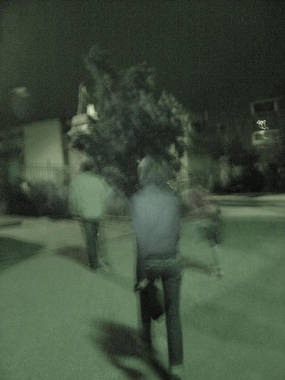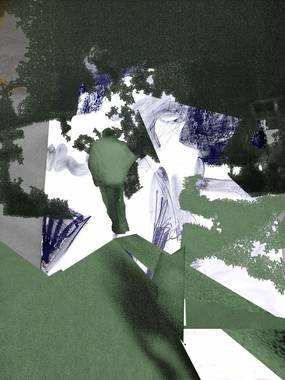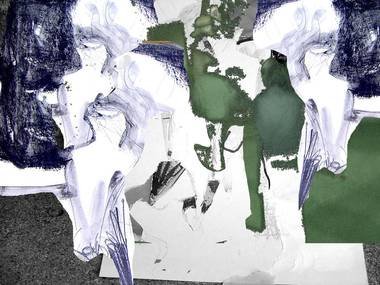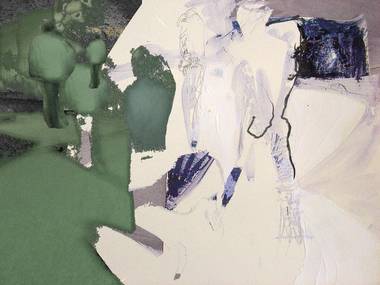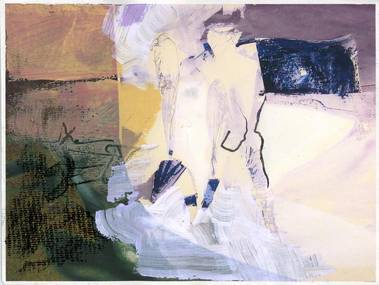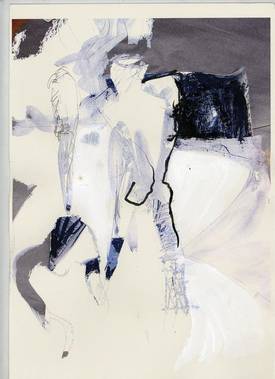Primary photo used as a parent to produce whole drawing family of the system.(a4 size)
"El amor y la muerte son una imbecilidad
Todo el mundo - -aqui sabe
que
nadie muere
y que
no existe........... la inmortalidad.Y basta.
En fin, no se si te gusta Lorca. Estuve ayer
en su casa, un hombre muy simpático (tré simpatique) y muy calido. No se por qué, o sí,... se confundieronlosguardasdelmuseo y me dejaron solo Alli
En su casa
pasé por debajo del patio (la luz de la vega Granadina y el Cristo de al lado, guardando la hipocresía que la virgen del Carmen lleva en el cuello ,..., Atravesada.Vientos ligeros y ligeras brisas.No mucho, no mucho mas que los neumáticos finos,
Finos finos
Que crepitan por el camino vacio___que abren el espacio liso..o tres
Que es el techo de la tienda del nomada del bereber desde arrriba
Un punto inmensurable, solo numerable-
Por quien?
Todo eso se me habia metido: no lo pude sacar
fisicamente él me abrio la puerta,
no lo pude evitar, parte de él se quedo en mí.
Y despues,
Mi coche,
finas, finas, como ruedas del siglo 19.
Solo recorribles
por dentro o por fuera, de una en una,,,,
hay que tomarse su tiempo
y el resultado?
Y el fin? se han acabado.Se han quebrado
Y solo nos queda recorrer para hallar, , como el que escribre, como yo te escribo a ti,
Un espacio –
solo recorrible, ... por eso noacabareconunpunto"
Historias impertinentes.Federico Salmeron, Alianza(1974).
Knowledge structuring and visual thinking
I could not help talking in this section, near "The incredible painting machine" about the obvious connection this piece of art has with some of my inquiries on visual thinking that I am developing in a series of small texts.
The relationship between knowledge, thought and art, that is so often discussed in between art theorist, linguistics,artist and public in general. Determining if visual arts are simply a matter of taste, if there are a sub product of the psychological personality of the artist or maybe a social-market phenomena is a matter of very great concern in contemporary art, but so was also in the early times of renaissance. Not trying to solve this extremely complex question with a simple answer we would suppose that a combination of factors and views could better place this text in resonance with the art practice. I shall advice in the beginning of this collection of reflections my position as a writer in relationship with this artwork and how I see in general the relationship about writing and visual art
We have to get us used that talking about art could never be a translation in words of this phenomena, very different in nature compared with the writing process, nor even a quest of the meaning from an specific artwork. What the man on the street refers as a description of an image or a painting has to be understood with a different point of view. The text is always aside, like distant related species they never could get descendants. Needless to say I don't mean they do not influence each other, writing influences painting and painting do also influence very much writing. What I am trying to say is that there is no translation or fusion, they both stay autonomic even on the most intimate mixes. To use an analogy we can see both of them and their relationship as a colloid or an emulsion. Take for example water and oil which everybody knows they do not mix, who would say that such an strange mixture of oil, eggs, vinegar and salt could become this delicious substance that is mayonnaise. Strangely, even if they do not dissolve on each other, the mixture create new unpredictable properties and effects. Because of that, between both there is always this friction or irritation as Niklas Luhmann would say. Speaking of an image is like caressing a body, like the friction between ourselves that could go, to put it in terms of our both extreme hobbies, from sex to war.
Picking up again the subject which with we began this article shall we reflect about the artwork of Kasssorla.
Everybody is familiarized with the taxonomy trees with which we use to categorize knowledge, bookcases, index of books or even relationships in a tribe, a family or a company.
The way in which knowledge is structured is not an arbitrary hobby of careful librarians, but it in fact a part of an ideology of meaning. "The incredible painting machines" . The way we divide knowledge let say for example philosophy, anthropology, mathematics, philosophy of language, cultural anthropology and so on construct inevitably this conceptual trees in which we organize our libraries but in general the way we organize information. Meaning has been for decades the central activity of linguistics an specifically they key stone of semiotics.
Since the mythical time of Saussure the use of linguistics has been broaden to the study of the most diverse and distant phenomena one could ever imagine. Structural linguistics has been applied from literature to advertising, drawing and paintings. The excitement of discovering a theory that could somehow explain meaning has drench all the places of culture that traditionally were impenetrable to the classical thought. In the case of painting, that was for centuries an unfathomable hole for reason the effort and joy of may be exploring a forbidden soil has reach the point of exaggeration.
Probably one of the most interesting cases are the texts of Roland Barthes, who reach the point identify the text surrounding the canvas to the painting itself:
"Como es evidente, no se trata de restringir la escritura del cuadro a la crítica profesional de la pintura. El cuadro, escriba quien escriba, no existe sino en el relato que se hace de él; es más: en la suma y organización de las lecturas que de él pueden hacerse: un cuadro nunca es otra cosa que su propia descripción plural".
His point of view is a tipical example of what Alfred Korzybski wrote on the 20s
"Como lo veremos de inmediato con mayor claridad, toda imagen es polisémica; implica, subyacente a sus significantes, una de significados, entre los cuales el lector puede elegir algunos e ignorar los otros. La polisemia da lugar a una interrogación sobre el sentido, que aparece siempre como una disfunción, aún cuando la sociedad recupere esta disfunción bajo forma de juego trágico (Dios mudo no permite elegir entre los signos) o poético (el -pánico- de los antiguos griegos). Aún en el cine, las imágenes traumáticas están ligadas a una incertidumbre (a una inquietud) acerca del sentido de los objetos o de las actitudes. Por tal motivo, en toda sociedad se desarrollan técnicas diversas destinadas a fijar la cadena flotante de los significados, de modo de combatir el terror de los signos inciertos: el mensaje lingüístico es una de esas técnicas"
Barthes believing in the structuralist ontology expands the notion of the impossibility of perfect denotation (in an structuralist analysis from the image) to infere that the image, the painting in this case needs the fixation of meaning that provides language. This leads to a somehow obscure reflection of the relationship between the text and the painting as the painting itself. Beautiful as a linguistic metaphor it may not be included in a philosophical text with aspirations of structuralist truth.
He presents his theory without pointing out which is the methodology which the researcher withholds as his discourse is taking or granted the the semiotic model that he uses is a reality by itself. With this I mean that he believes that the structural semiotic model that he uses is the phenomena of meaning and not a useful tool to analyze the structure in which meaning is presented on language. About this topic Umberto Eco was explicit enough in his......
To put in very popular words, "to a man with a hammer, everything looks like a nail".
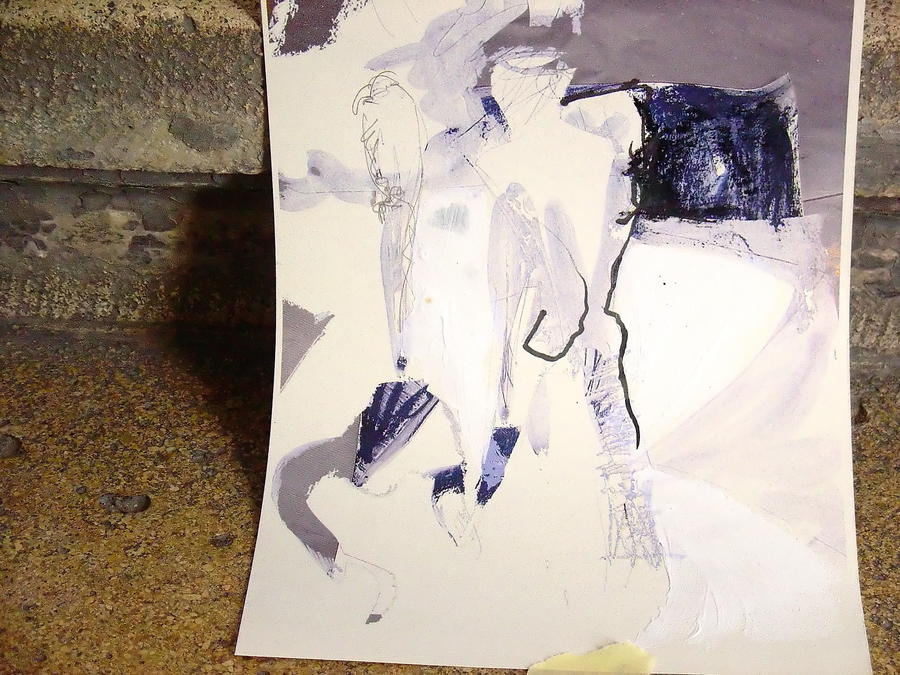
As Eco underlined, the discovery of an analytical system which could simplify unfamiliar processes in more familiar ones, doesn't imply that the system of analysis is under the process itself.
Even if we discover a metatheory of human behavior as structuralist have, applicable universally (in theory) this doesn't mean that the same processes couldn't be reduced to other systems different as the one applied. Furthermore, such consideration, the structuralist method as an ontological philosophy could easily led to a situation in which they become an ideology when not a religion.A meaningful example of this is the opposition of Levi Strauss (the father of structuralism) to abstract paintings and the serial music of Pierre Boulez, exactly because they contradicted the structuralist method. Hidden in the text of Barthes and disguised as an avant-garde thought is in fact a regressive point of view of painting, in which everything that doesn't agree with his ontological model is rejected, in this case the painting itself in favour of the description of the text related with it.
But let us analyze his text more deeply. In the first place to begin his "rethoric of the image" he uses an example of the advertising world. Which is an example of image that would logically fit in a semiotic analysis because is very often attached to text.
To explain the second property of text in relation with an image (relay) he uses comics or caricatures (again usually text-attached). To explain the utopia of pure denotation he delight us with the photographic technology to return again to the image in general an report his conclusions. Not to question the dubious election of the example he uses almost all traditionally related with text, is the question if someone could build a general theory of image invoking two or three examples which belong to totally different cultural environments and which function as image is totally different. Only because of the work of linguistics that applied semiotics to the icons?
This raises the question of how could we reduce the analysis of three (or more) cultural manifestations that belongs to totally different parts of culture as advertising, art, or mass-media with only the aid of the iconic semiotics. Couldn't we use a monetary analysis or even a ritual one, and if we can analyze these process with the aid of different theories this means that the model doesn't exhaust the phenomena, meaning that it cannot be considered in an ontological perspective as Eco suggested.
Later on his book in the chapter entitled "is painting a language?" we find the previous description in which reduces painting as a collection of the texts related to it. This implies that he considers the analytical method used in an ontological view as we commented above because he is presenting us the method he uses to reflect about image, as a reality behind the painting and even the painting itself.
Not to deepen in all of the examples he uses, the reduction of painting to discourse or description arises a more deeper question. How is that that we can reduce paintings that belong to the high-ritualized and even operationally closed (by Luhmann view) art society ignoring the structure in which it is embedded? Even further, is possible to reduce a painting to an image, scorning all the added value represented by the structure of the art society?
Paradoxically, the thought of Barthes applies a structural semiotic method without taking account of the structure of the society in which this manifestations occur, thus negating the appliance of the general structuralist method.
Lets get out of his discourse and let we analyze the "context" of the author itself a philosopher which uses his writing as a way of living. A man who believes that the structuralism is not a way of analyzing meaning but meaning itself. Believing also that pure depiction is impossible and that like in his text describing how an advertising image works the text determines and controles the possible (infinite) interpretations of the image, the text must give the precious meaning ruled by the semiotic reality. But should we restrict what we learn by seeing an exhibition to a model developed originally to understand language? Are not we trying to impose language as the privileged expression of cognition?
To question Barthes a bit further, is thought and language the same thing? Is not suspicious that the people affirming that, are specialist writers themselves?
In a more restricted point of view, the one in which we realize that the semiotic tools are just that, tools. We could make a more enriched approach in which some of the structured views could be included as reflections of the visual phenomena an indeed the painting itself.
And now is the time in which we can reach again "incredible painting machine" which in fact uses as part of his irony some of the models used in semiotics. The infinite tree of image recombination, remits directly to the classic k tree, let use the one described in the absent structure of Eco:
The way in which meaning is determined by digital opposition of endless possibilities is in this work joked with a similar structure which in fact retrieves the opposite effect the proliferation of possibilities. Subverting the taxonomy model the artwork proposes an easy system to create virtually infinite visual works. Like offering to the analyst a way to overcome the unspoken frustration of the analysis of image by being able to create painting themselves. But it is at the same time a ludicrous game in which the analyzing tools are included on the body of the analyzed. If we focus ourselves on the title, "the incredible painting machine in Luhmanns mode", we get immediately to the "laws of form" of ... Used intensively by Luhmann in most of his work related with art. Let expose expose roughly the law of form applied to a painting:
Drawing the first stroke in the canvas the artist make a first distinction if we consider the painting as an isolated entity. Every time he makes an new stroke he delivers another distinction that takes account of the first distinction, thus introducing the form inside form and at the same time reducing the world of possible strokes suitable in this particular painting. The process of painting then, instead of printing an image as a whole (as in the gestaltic view) builds a self-contained set of decisions inside decisions which reduces the arbitrary of possibility into necessity. When the painted is finished no stroke can by added without destroying the structure (or logic) of the painting itself.
Reversing also the "laws of form", Kassorla proposes an infinite expansion of possibility. Even further in this model contingency expands in every generation of drawings. Reproducing in this way the concept of contingency from Aristotle in which contingency is what is not impossible neither necessary. Is not impossible because as Dieter Mersch explain the artist choose the method an even the logic in which this world of infinite possibilities is constructed thus is not impossible to create a particular drawing but at the same time is not necessary to create this particular painting because the system determines infinite other possibilities.
If we think deeper the machine is declaring a more profound gnoseology. "The incredible painting machine", is reversing the analytical point of view and instead of using a model to restrict the code in to another easier code, its developing a model in charge of creating a more intricate and complex expression. Its logic is the logic of production not of reduction. Is offering us a point of view in which the model enriches the process in which it is applied. Could it be knowledge understood in that way? Is the process of production a knowledge by itself?
Much is written about what is knowledge and what is not, how may it function but all that we reflect and research, is at the end confronted with the very deep question of what it is conscience. The classical example would be the question if a particular machine is really understanding or its only answering as a reaction to the program on it embedded, not to bear in mind if its a random generating program or a logically structured one. Like in the Turing experiment, the important thing is if the machine is understanding the messages that it receives through the input and thus being aware of his position and that he is actually making this other that operation which is indeed implying that the machine is capable of being self-conscience. It is not possible to separate the question of meaning from the experience of consciousness . Somehow questioning meaning-consciousness seemes to be the same action as trying to fly pulling our own shoes laces. Analyzing meaning through language leaves us invariably like in a mirror with language itself. Philosophy had traditionally identified thinking and thus meaning with language. Today almost any computer can produce text in very different ways some of them with processes called artificially intelligent obviously by the engineers they produce them. Given that we are talking about about humans, supposedly gifted with a high degree of self-consciousness the question is, which activities this humans do could be addressed as meaningful and if we should reduce knowledge and thinking to the production of text. As we said, till we understand the deepness and consequences of consciousness we are in no position to restrict what should it be thought or not.
So lets make the hypothesis that there is a way to produce knowledge, that there is a different thinking apart from what language do, and see how far can we get.
